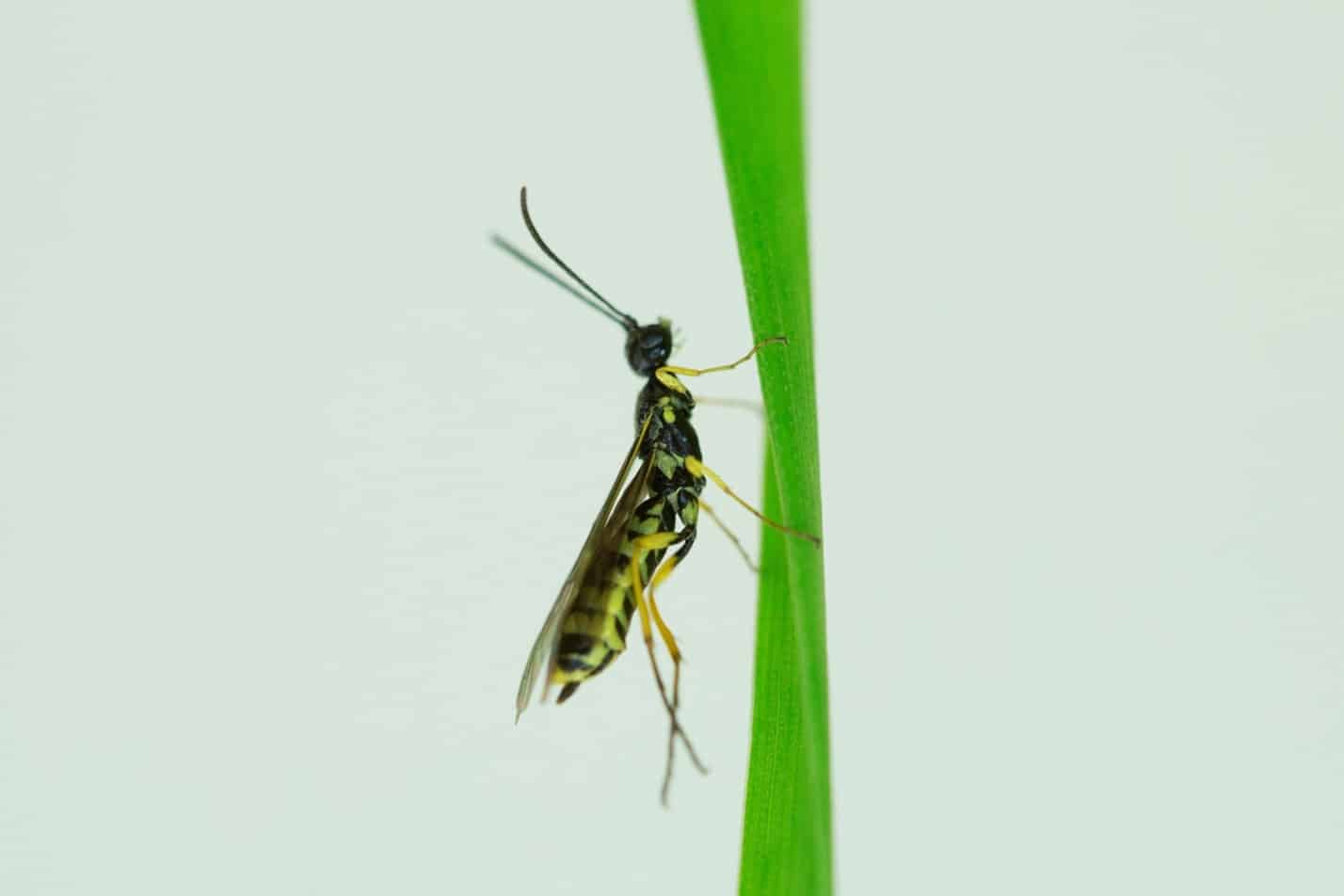Wheat stem sawflies are non-stinging wasp-like insects that cause wheat yield losses across the U.S. Sawflies previously targeted spring wheat crops; however, these pests have recently emerged in Kansas, Colorado and Nebraska, suggesting that it is evolving to feed on winter wheat crops as well. To address this growing threat, the Foundation for Food & Agriculture Research (FFAR) awarded a $150,000 Rapid Outcomes from Agricultural Research (ROAR) program grant to Colorado State University to increase crop resistance to wheat stem sawfly. Colorado State University, the Colorado Wheat Administrative Committee and the University of Nebraska provided matching funds for a $300,000 total investment.
 An adult sawfly
An adult sawfly
Wheat stem sawfly is a grass-feeding insect that bores and/or cuts into stems, displacing plant stems and roots from their vertical and proper placement, causing lodging. Lodging lowers yields and diminishes nutrient density. According to the U.S. Department of Agriculture – Agriculture Research Service (USDA-ARS), the pests’ prevalence has greatly increased, causing $25 million in losses in Montana alone in 2020. Damages are predicted to increase as wheat stem sawfly has recently been found in winter wheat crops in Kansas, the top winter wheat producing state. Currently, chemical controls are ineffective and cost prohibitive against sawflies. With no single effective management strategy, the identification of genes for resistance and better predicting what causes sawflies to spread is vital for protecting farmers’ profitability and building a resilient agricultural supply chain.
 Fallen wheat straws due to sawfly damage
Fallen wheat straws due to sawfly damage
To address this pervasive pest, Colorado State University researchers, led by associate professor of entomology Dr. Punya Nachappa, are identifying resistance genes in wheat and developing predictive models that determine the likelihood of wheat stem sawfly infestation under specific climate and landscape conditions.
FFAR’s ROAR program rapidly funds research and outreach in response to emerging or unanticipated threats to U.S. food supply or agricultural systems.